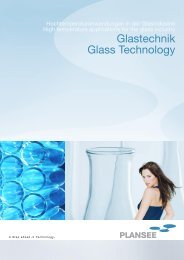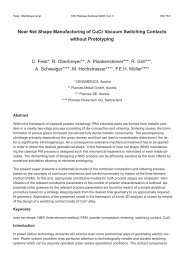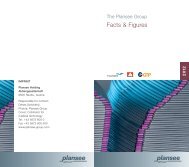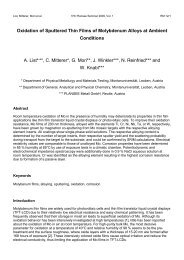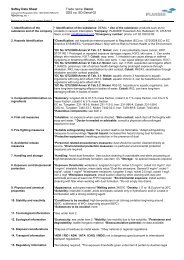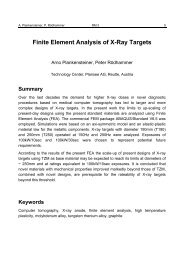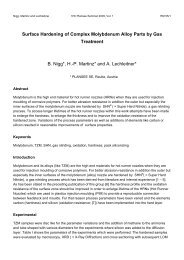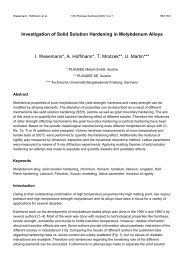PROPERTIES OF THE SIBOR® OXIDATION PROTECTIVE - Plansee
PROPERTIES OF THE SIBOR® OXIDATION PROTECTIVE - Plansee
PROPERTIES OF THE SIBOR® OXIDATION PROTECTIVE - Plansee
Create successful ePaper yourself
Turn your PDF publications into a flip-book with our unique Google optimized e-Paper software.
H.P. Martinz et al. RM 7 77<br />
Fig.15: Macros of cullet from E2 (after 4 x 24 h): SIBOR partly adherent to glass -<br />
darkening of the glass (arrow)<br />
Fig.16: Macros of cullet from M1 (after 8 x 24 h): interface partly adherent to glass –<br />
bubbles - darkening of the glass (arrow)<br />
It is remarkable that there is not so much difference between the cullets from the<br />
coated (Fig. 14 and 15) and the uncoated Mo sample (Fig.16) after 4 to 8 days: amber<br />
glass colour with a dark zone adjacent to the metal (already after 2 days). The<br />
explanation is: growing dominance of the reaction of Mo with the refining agent.<br />
The following figures (17 – 19) show cross sections of the metal – glass interface of the<br />
samples being depicted in figures 11 to 13.<br />
As can be seen in Figures 17 and 18 the dissolution of the coating systems is not yet<br />
finished after 192 and 96 hours respectively; A preliminary investigation in a parallel<br />
experiment at 1350°C indicates residual Si within the coating even after 168 hours. A<br />
more detailed EDX analysis will be performed to reveal the composition of the<br />
remaining coating “skeletons” of figures 17, 18. In case of Mo only small voids in the<br />
dense material are visible after 192 hours (Fig.19).



